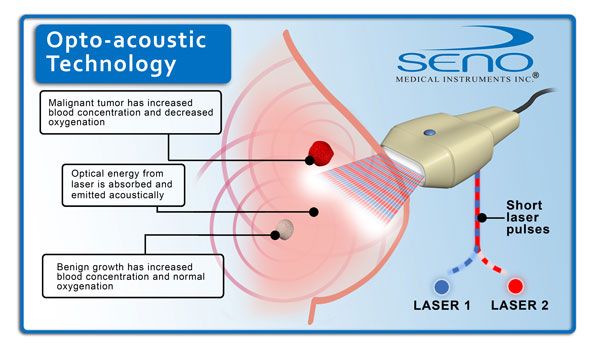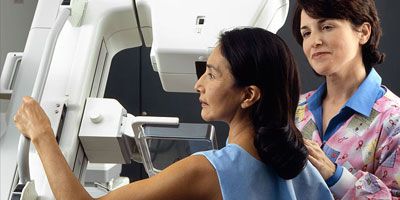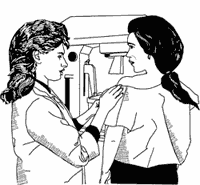Understanding the Emotional Landscape of Mammography
Due to the deeply personal and sensitive nature of mammography, it is challenging to anticipate the various emotions or personal circumstances a woman may be facing during her appointment. Each individual’s experience can significantly differ based on a myriad of factors unique to her situation.
Factors Influencing Emotional Response
Several factors can shape a woman’s emotional state during a mammography appointment:
- Family History of Breast Cancer: Women with a family history of breast cancer may feel heightened anxiety or fear.
- Previous Health Scares: Past health issues can increase apprehension.
- Physical Discomfort: Concern about the physical discomfort associated with the procedure.
- Potential Outcomes: Anxiety about the results of the mammogram.
“Each individual’s experience can significantly differ based on a myriad of factors unique to her situation.”
Cultural and Personal Beliefs
Cultural and personal beliefs about health and medical procedures can also influence a woman’s emotional state:
- Embarrassment or Discomfort: The intimate nature of the examination can cause feelings of embarrassment or discomfort.
- Financial Concerns: Worry about the potential financial implications of the procedure and follow-up care.
Experience with Mammograms
Previous experience with mammograms can shape expectations and comfort levels:
- First-Time Patients: May feel more anxious due to unfamiliarity with the process.
- Returning Patients: May have different expectations and levels of comfort based on past experiences.
For more information on mammography and tips on managing the emotional aspects of the procedure, visit our Radiologic Technology Resources page.
Explore continuing education opportunities in radiography at CE4RT.
Approaching Mammography with Sensitivity and Empathy
Healthcare providers must be aware of the varied emotional landscapes women may bring to their mammography appointments. Each experience is unique, and approaching each appointment with sensitivity and empathy is crucial.
Effective Communication
Effective communication can help alleviate anxiety and discomfort. Providers should:
- Provide Clear Information: Explain the procedure thoroughly.
- Create a Supportive Environment: Ensure the patient feels comfortable and supported.
“Understanding that each patient’s experience is unique and offering personalized care can make a significant difference.”
Personalized Care
Recognizing the unique emotional landscape of each patient is essential. Personalized care includes:
- Approaching each patient with openness and sensitivity.
- Establishing a positive rapport to ease anxiety, especially given the intimate nature of the exam.
Addressing Emotional Concerns
Technologists should be mindful of the range of emotions patients may experience, including:
- Fear of Potential Results: Address concerns about the outcomes with compassion.
- Discomfort with the Procedure: Acknowledge and mitigate physical discomfort.
Enhancing the Mammography Experience Through Understanding and Compassion
Understanding and addressing patients’ feelings can significantly enhance their mammography experience. Patients may feel vulnerable or anxious due to a family history of breast cancer or personal health scares. Technologists can play a key role in alleviating these feelings.
Active Listening and Clear Communication
Technologists can help by:
- Listening Actively: Pay attention to patients’ concerns and fears.
- Providing Thorough Explanations: Clearly explain the procedure to demystify the process.
- Reassuring Patients: Set realistic expectations to reduce apprehension.
“Transparency in communication can demystify the process and reduce patient apprehension.”
Creating a Supportive Environment
Support goes beyond technical expertise and includes:
- Showing Empathy and Patience: Allow time for patients to express their concerns.
- Maintaining a Calm and Friendly Demeanor: Offer words of encouragement and ensure privacy and comfort.
- Responding with Compassion: Address concerns with understanding and care.
The Impact on Diagnostic Outcomes
Prioritizing these aspects of patient care helps alleviate some of the emotional burden associated with mammography. This approach improves the overall experience for the patient and contributes to more accurate and effective diagnostic outcomes, as a relaxed and cooperative patient is more likely to comply fully with necessary positioning and instructions during the exam.
Creating a Supportive Environment During Mammography
Acknowledging and validating the patient’s feelings is key to fostering a supportive and comfortable environment. This is especially important during mammography, which can be both physically and emotionally demanding. The physical discomfort of breast compression, combined with anxiety about potential findings, can make the experience particularly challenging for many women.
The Importance of Understanding Emotions
Recognizing and addressing patient emotions helps technologists play a crucial role in making patients feel more secure and cared for. This starts with:
- Active Listening: Hear the patient’s concerns and respond empathetically.
- Validating Feelings: Acknowledge that the procedure can be uncomfortable and that their feelings are normal.
“Simple acts of validation can go a long way in reducing anxiety.”
Providing Clear Explanations
Offering clear, concise explanations about each step of the procedure can help patients feel more in control. For example:
- Explain the Procedure: Detail why compression is necessary for obtaining clear images.
- Highlight the Benefits: Help patients understand how compression contributes to accurate diagnosis.
Impact on Patient Experience
By recognizing and addressing these emotions, technologists can create a more positive experience for patients. This approach not only reduces anxiety but also encourages patient cooperation, leading to more accurate and effective diagnostic outcomes.
Enhancing Patient Comfort During Mammography
Technologists play a crucial role in improving patient comfort and reducing anxiety during mammography. Small adjustments and a compassionate approach can make a significant difference.
Making Adjustments Based on Patient Feedback
Listening to and acting on patient feedback can greatly enhance comfort. Here are some strategies:
- Adjust Positioning: Modify the patient’s position to reduce discomfort.
- Take Breaks: Allow breaks if the patient feels overwhelmed.
“Providing reassurance and maintaining a calm, compassionate demeanor throughout the appointment can further alleviate stress.”
Providing Reassurance and Maintaining Calm
Maintaining a supportive atmosphere involves:
- Offering Reassurance: Continuously reassure the patient throughout the procedure.
- Compassionate Demeanor: Stay calm and compassionate to help alleviate patient stress.
The Impact on Imaging Results
By acknowledging and validating the patient’s feelings, technologists not only improve the emotional experience but also encourage better cooperation. This can lead to:
- Improved Cooperation: Patients are more likely to follow instructions accurately.
- More Accurate Imaging: Reduced anxiety can result in clearer and more accurate images.
Creating an environment where patients feel understood and supported helps ensure that mammography is as positive and stress-free as possible.



